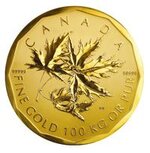A
austin_silver_hunter
Guest
Does the carat affect the how the signal registers or discriminates?
For example, how does an 18K ring hit, compared to 14K... or white gold/platinum? Is there any difference?
Keep in mind I'm using a BH 101, so there's not much finesse in separating anything... I just want to make sure I set the disc. for the best possible range of gold targets...
For example, how does an 18K ring hit, compared to 14K... or white gold/platinum? Is there any difference?
Keep in mind I'm using a BH 101, so there's not much finesse in separating anything... I just want to make sure I set the disc. for the best possible range of gold targets...






